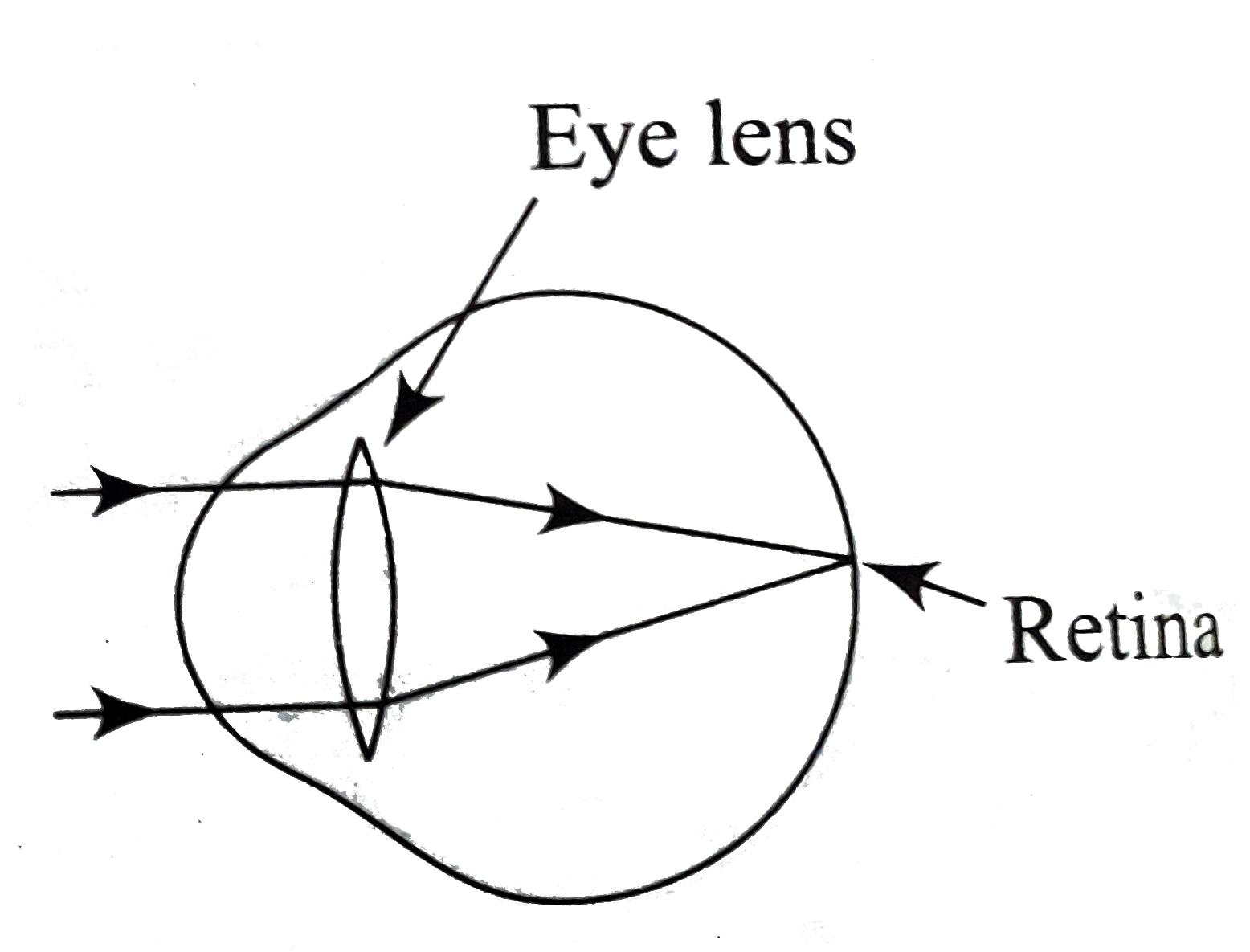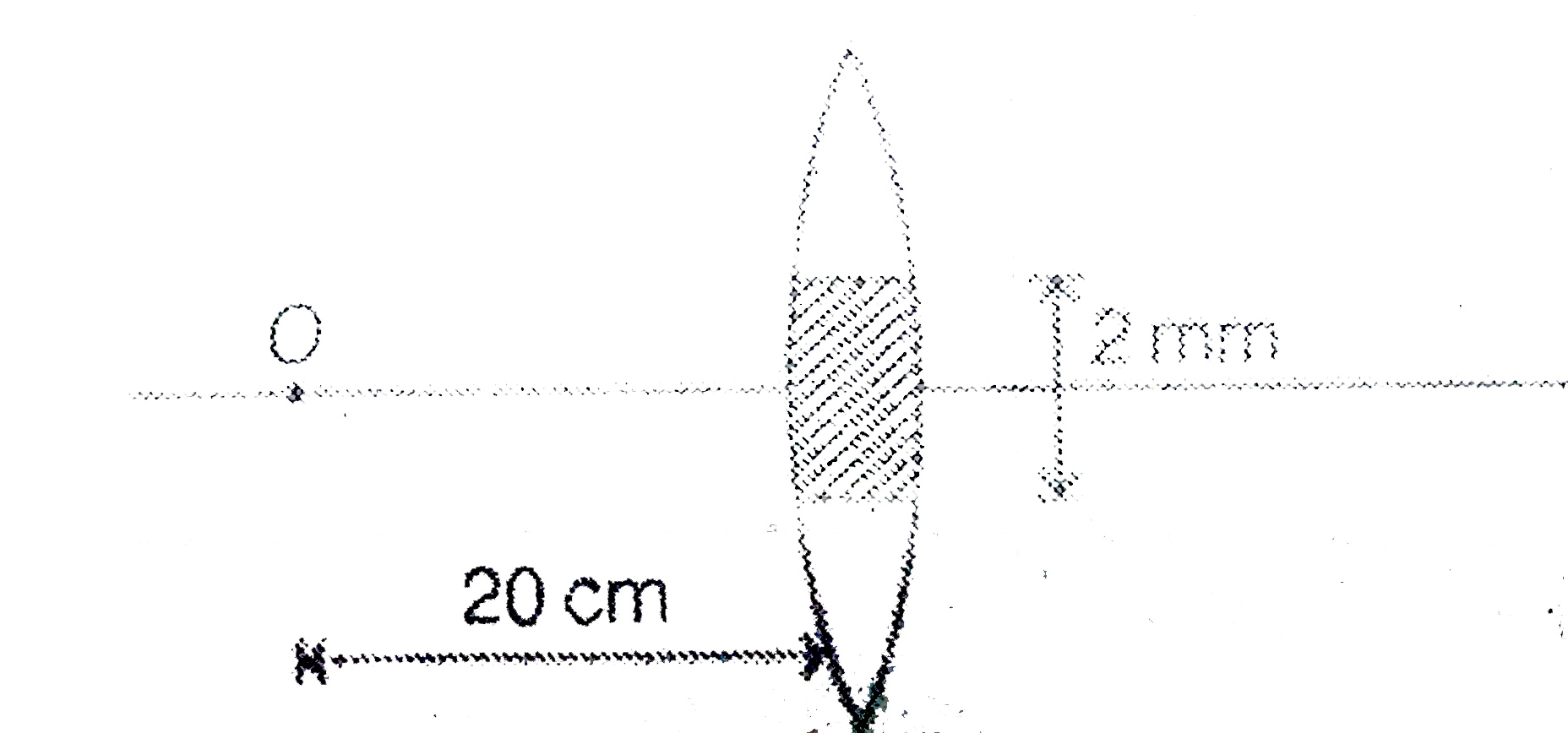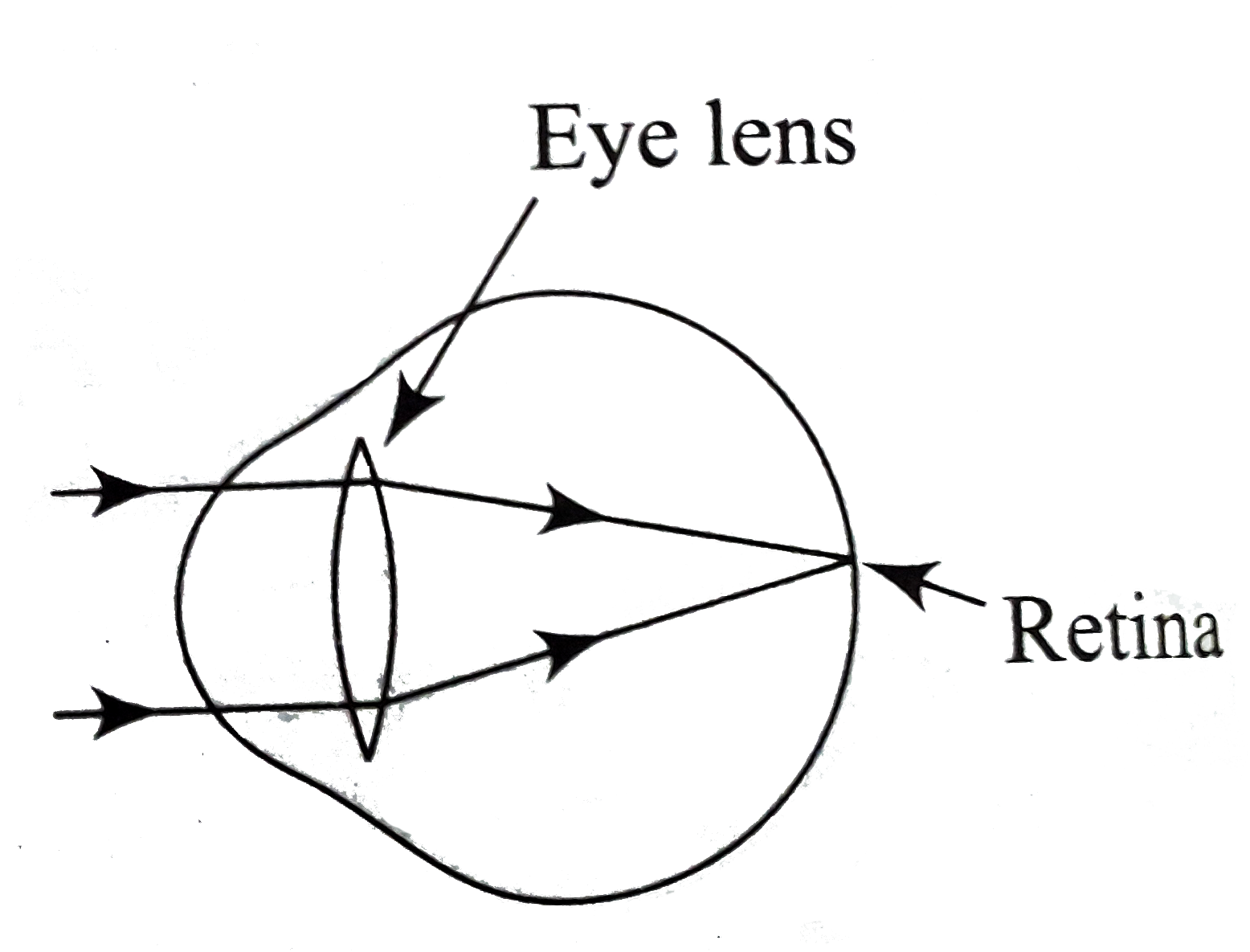By mistake, an eye surgeon puts a concave lens in place of the lens in the eye after a cataract operation. Will the patient be able to see clearly any object placed at any distance?
To solve the question regarding the effect of a concave lens being mistakenly placed in the eye after a cataract operation, we can break it down into the following steps:
1. Understanding the Function of the Eye Lens:
- The lens in the human eye is a convex lens that helps to focus light rays onto the retina, allowing for clear vision of objects at various distances.
2. Identifying the Type of Lens Used:
- In this scenario, a concave lens has been mistakenly used instead of the natural convex lens of the eye. A concave lens diverges light rays that pass through it.
3. Behavior of a Concave Lens:
- A concave lens always forms a virtual image. This means that the image cannot be projected onto a screen and will appear upright and smaller than the object.
- The image formed by a concave lens is always located on the same side as the object, between the lens and the object.
4. Effect on Vision:
- When an object is placed at a distance (even at infinity), the concave lens will still produce a virtual image that is not focused on the retina.
- Since the image is not focused on the retina, the brain receives blurred signals, leading to unclear vision.
5. Conclusion:
- Therefore, with a concave lens in place of the eye's natural lens, the patient will not be able to see clearly any object placed at any distance.
Final Answer:
The patient will not be able to see clearly any object placed at any distance due to the use of a concave lens instead of a convex lens.
---
- The lens in the human eye is a convex lens that helps to focus light rays onto the retina, allowing for clear vision of objects at various distances.
- In this scenario, a concave lens has been mistakenly used instead of the natural convex lens of the eye. A concave lens diverges light rays that pass through it.
- A concave lens always forms a virtual image. This means that the image cannot be projected onto a screen and will appear upright and smaller than the object.
- The image formed by a concave lens is always located on the same side as the object, between the lens and the object.
- When an object is placed at a distance (even at infinity), the concave lens will still produce a virtual image that is not focused on the retina.
- Since the image is not focused on the retina, the brain receives blurred signals, leading to unclear vision.
- Therefore, with a concave lens in place of the eye's natural lens, the patient will not be able to see clearly any object placed at any distance.
The patient will not be able to see clearly any object placed at any distance due to the use of a concave lens instead of a convex lens.
Topper's Solved these Questions
- OPTICAL INSTRUMENTSBOOK - HC VERMA ENGLISHCHAPTER - OPTICAL INSTRUMENTSEXERCISE - Exercises
23 Videos
- MAGNETIC PROPERTIES OF MATTERBOOK - HC VERMA ENGLISHCHAPTER - MAGNETIC PROPERTIES OF MATTEREXERCISE - Short Answer
6 Videos
- PERMANENT MAGNETSBOOK - HC VERMA ENGLISHCHAPTER - PERMANENT MAGNETSEXERCISE - Short Answer
11 Videos
Similar Questions
Eye lens is held in the place by
View SolutionWhat holds the lens of eye in place?
View SolutionA person suffering from defective vision can see objects clearly only beyond 100 cm from the eye. Find the power of lens required so that he can see clearly the object placed at a distance of distinct vision (D = 25cm)
View SolutionThe ciliary muscles of eye control the curvature of the lens in the eye and hence can alter the effective focal length of the system. When the muscles are fully relaxed, the focal length is maximum. When the muscles are strained, the curvature of lens increases. That means radius of curvature decreases and focal length decreases. For a clear vision, the image must be on the retina. The image distance is therefore fixed for clear vision and it equals the distance of retina from eye lens. It is about 2.5cm for a grown up person.
A perosn can theoretically have clear vision of an object situated at any large distance from the eye. The smallest distance at which a person can clearly see is related to minimum possible focal length. The ciliary muscles are most strained in this position. For an average grown up person, minimum distance of the object should be around 25cm.
A person suffering from eye defects uses spectacles (eye glass). The function of lens of spectacles is to form the image of the objects within the range in which the person can see clearly. The image o the spectacle lens becomes object for the eye lens and whose image is formed on the retina.
The number of spectacle lens used for th eremedy of eye defect is decided by the power fo the lens required and the number of spectacle lens is equal to the numerical value of the power of lens with sign. For example, if power of the lens required is +3D (converging lens of focal length 100/3cm ), then number of lens will be +3.
For all the calculations required, you can use the lens formula and lensmaker's formula. Assume that the eye lens is equiconvex lens. Neglect the distance between the eye lens and the spectacle lens.

Q. A near sighted man can clearly see ojects only upto a distance of 100cm and not beyond this. The number of the spectacle lenses necessary for the remedy of this defect will be
View SolutionA convex lens of focal length 10 cm is painted black at the middle portion as shown in figure. An object placed at a distance of 20 cm from the lens. Then

View SolutionThe transparent lens in the human eye is held in its place by
View SolutionThe transparent lens in the human eye is held in its place by
View SolutionThe transparent lens in the human eye is held in its place by
View SolutionThe ciliary muscles of eye control the curvature of the lens in the eye and hence can alter the effective focal length of the system. When the muscles are fully relaxed, the focal length is maximum. When the muscles are strained, the curvature of lens increases. That means radius of curvature decreases and focal length decreases. For a clear vision, the image must be on the retina. The image distance is therefore fixed for clear vision and it equals the distance of retina from eye lens. It is about 2.5cm for a grown up person.
A perosn can theoretically have clear vision of an object situated at any large distance from the eye. The smallest distance at which a person can clearly see is related to minimum possible focal length. The ciliary muscles are most strained in this position. For an average grown up person, minimum distance of the object should be around 25cm.
A person suffering from eye defects uses spectacles (eye glass). The function of lens of spectacles is to form the image of the objects within the range in which the person can see clearly. The image o the spectacle lens becomes object for the eye lens and whose image is formed on the retina.
The number of spectacle lens used for th eremedy of eye defect is decided by the power fo the lens required and the number of spectacle lens is equal to the numerical value of the power of lens with sign. For example, if power of the lens required is +3D (converging lens of focal length 100/3cm ), then number of lens will be +3.
For all the calculations required, you can use the lens formula and lensmaker's formula. Assume that the eye lens is equiconvex lens. Neglect the distance between the eye lens and the spectacle lens.

Q. A far sighted man connot see objects clearly unless they are at least 100cm from his eyes. The number of the spectacle lenses that will make his range of clear vision equal to an average grown up person will be
View SolutionThe ciliary muscles of eye control the curvature of the lens in the eye and hence can alter the effective focal length of the system. When the muscles are fully relaxed, the focal length is maximum. When the muscles are strained, the curvature of lens increases. That means radius of curvature decreases and focal length decreases. For a clear vision, the image must be on the retina. The image distance is therefore fixed for clear vision and it equals the distance of retina from eye lens. It is about 2.5cm for a grown up person.
A perosn can theoretically have clear vision of an object situated at any large distance from the eye. The smallest distance at which a person can clearly see is related to minimum possible focal length. The ciliary muscles are most strained in this position. For an average grown up person, minimum distance of the object should be around 25cm.
A person suffering from eye defects uses spectacles (eye glass). The function of lens of spectacles is to form the image of the objects within the range in which the person can see clearly. The image o the spectacle lens becomes object for the eye lens and whose image is formed on the retina.
The number of spectacle lens used for th eremedy of eye defect is decided by the power fo the lens required and the number of spectacle lens is equal to the numerical value of the power of lens with sign. For example, if power of the lens required is +3D (converging lens of focal length 100/3cm ), then number of lens will be +3.
For all the calculations required, you can use the lens formula and lensmaker's formula. Assume that the eye lens is equiconvex lens. Neglect the distance between the eye lens and the spectacle lens.

Q. A person can see objects clearly from distance 10cm to ∞. Then, we can say that the person is
View Solution
